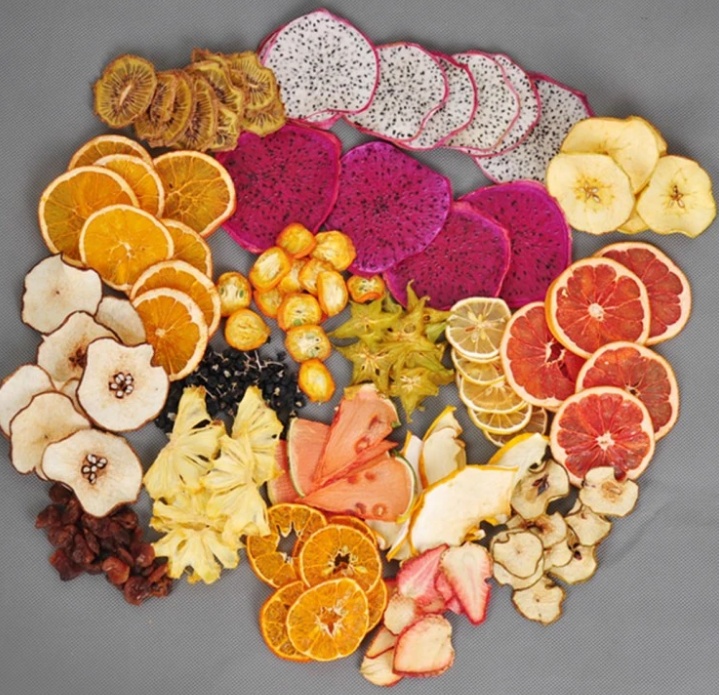
Dried fruit is one of Vietnam’s key agricultural exports with an impressive growth rate. Processed from an abundance of fresh, delicious tropical fruits, Vietnamese dried fruit not only retains its natural flavor and nutritional value but also offers convenience, making it a popular snack and a sought-after ingredient in the international market.
1. Origin and Product Variety
Vietnam’s advantage of a tropical monsoon climate has made it a “fruit paradise,” creating a rich source of raw materials for the drying industry.
- Abundant Raw Materials: The most commonly used fruits include mango, dragon fruit, jackfruit, banana, pineapple, and persimmon. These fruits are grown in large specialized regions like the Mekong Delta and the Central Highlands, ensuring consistent quality and flavor.
- Diverse Processing Methods: Vietnam’s industry has significantly advanced with various modern technologies to create a diverse range of products:
- Soft-Dried: The most common method, resulting in a soft, chewy product that retains a specific moisture level and natural sweetness (Examples: soft-dried mango, soft-dried persimmon).
- Freeze-Dried: A high-end technology that creates a crisp, light, and airy product, preserving almost the entire color, shape, and nutrition of the fresh fruit (Examples: freeze-dried strawberry, crispy dried jackfruit).

2. Nutritional Value and Export Advantages
Dried fruit is a concentrated food source, very convenient for modern consumers.
- Concentrated Nutrition: The drying process removes water, which increases the content of fiber, vitamins, and antioxidants (like Beta-Carotene) per serving. The product is a rich source of energy and minerals.
- Convenience and Preservation: Dried fruit is lightweight, easy to transport, and has a long shelf life (up to 12 months) without requiring strong chemical preservatives, meeting the global market demand for convenient and safe food.
- Natural Sugar Alternative: Soft-dried products retain the fruit’s natural sweetness, making them a healthy alternative to candies or high-sugar snacks.
3. Processing Standards and Quality Control
The production process for Vietnamese dried fruit strictly adheres to international standards to ensure export quality.
- Raw Material Selection: Fruits are harvested at peak ripeness, then washed, peeled, and uniformly sliced/cubed.
- Drying Stage: The fruit is dried using specialized machinery, with tightly controlled temperature and time to achieve the desired moisture level and texture.
- Quality Inspection and Packaging: Products are tested for chemical residues and microbiological content, then packed in airtight, vacuum-sealed, or moisture-proof packaging for optimal preservation.
- Export Standards: Many enterprises adopt quality management systems like HACCP, ISO 22000, and GlobalGAP to ensure traceability and food safety.
4. Export Potential and Target Markets
Vietnamese dried fruit holds a strong foothold in many international markets.
- Main Markets: China, the U.S., the European Union (EU), Japan, and South Korea are major importing markets. Products like crispy dried jackfruit and soft-dried mango are especially popular.
- Competitive Advantage: Vietnam benefits from competitive raw material pricing, high-quality fresh fruit, and the flexibility to supply a diverse range of products, from traditional soft-dried to high-tech freeze-dried lines.
Vietnamese dried fruit is more than just a snack; it is a culinary ambassador, bringing the sweet, pure flavor of the tropical region to every corner of the world.
Other articles:
Other agricultural products:


